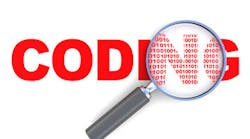Collecting what's owed to your dental practice is often as simple as knowing which codes to use. But we all know, that isn't always so simple. DAOMD editor Kyle Summerford strives to make coding easier with his monthly column.
Are you billing for localized delivery of antimicrobial agents (LDAA) placement correctly? This would include Arestin, Periochip, and Atridox. CDT code D4381 is—localized delivery of antimicrobial agents via controlled release vehicle into diseased crevicular tissue, per tooth.
At the end of this article you will understand what the code D4381 is used for and how to correctly use it in your dental practice to ensure successful insurance claim reimbursement. Let’s start by understanding the CDT description, which defines the use and purpose of minocycline.
According to the CDT, the minocycline antimicrobial placed must be FDA approved and applied subgingivally into periodontal pockets with the purpose of suppressing the pathogenic microbiota. These devices slowly release the pharmacological agents so they can remain at the intended site of action in a therapeutic concentration for a sufficient length of time. This helps to reduce gum inflammation.
Let’s discuss limitations and reasons for denial
• If your patient’s plan does NOT cover LDAA placement
• If your patient has NO history of severe periodontitis or deep pockets, 5 mm to 7 mm, indicated on periodontal charting within six months
• If your patient has NOT undergone any type of periodontal therapy, such as scaling and root planing, osseous surgery, or ongoing periodontal maintenance visits
Common coding errors
• If you indicate the brand name instead of “minocycline” on the ADA claim form
• If you fail to bill the ADA code, per tooth
• If you fail to provide periodontal charting within the last six months and a full set of x-rays
Limitations of coverage
• If you determine LDAAs are in fact a covered benefit, insurance companies are likely to only reimburse eight sites or fewer per visit.
• If your patient is not a candidate for osseous surgery due to medical conditions such as diabetes or heart disease, the patient may be entitled to an alternative benefit for placement of LDAAs. (This must be indicated on the claim form.)
• If your patient has undergone periodontal therapy and is still classified as a “severe periodontal disease” patient, coverage might be available.
• If your patient’s dental insurance denies placement of LDAAs, there are outside resources that now exist in today’s economy, such as specialized pharmacies that might deliver the drug directly to the dentist’s office.
I always recommend that you preauthorize dental treatment to ensure coverage.
MORE DENTAL CODING WITH KYLE ARTICLES:
D1110–Prophylaxis vs. D4910–Periodontal maintenance
D6010—Surgical placement of implant body: Endosteal implant
Immediate denture (D5130) vs. interim complete denture








